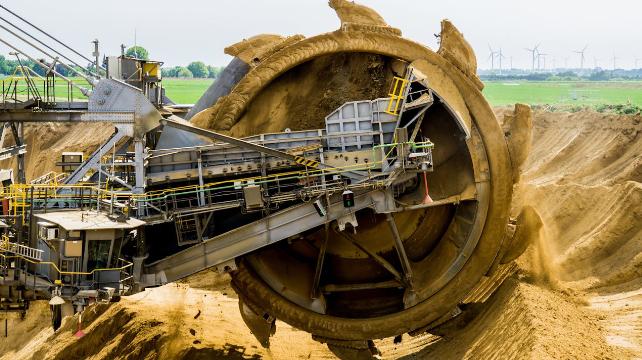This post was originally published on Sustainability Times
Source: Sustainability Times
| IN A NUTSHELL |
|
In a groundbreaking discovery, researchers in Australia have unveiled a method to enhance the strength of concrete by incorporating charred coffee grounds. This innovative approach not only addresses the massive global waste problem caused by coffee consumption but also provides a sustainable solution for the construction industry. With billions of kilograms of coffee waste generated annually, most of which ends up in landfills, this research paves the way for a more environmentally friendly future.
The Coffee Waste Conundrum
Every year, the world grapples with the disposal of approximately 10 billion kilograms of coffee waste. This colossal amount of organic refuse predominantly finds its way into landfills, posing significant environmental challenges. As organic waste decomposes, it emits substantial quantities of greenhouse gases, such as methane and carbon dioxide, which contribute significantly to climate change. The need to address this issue is becoming increasingly urgent, given the escalating impacts of global warming.
RMIT University engineer Rajeev Roychand highlights the pressing need for solutions to this waste problem. By transforming coffee grounds into a valuable resource for the construction industry, researchers are demonstrating a sustainable approach to waste management. This not only helps in reducing the carbon footprint but also aligns with global efforts to combat climate change.
“As old as dinosaurs”: this massive mammoth tusk unearthed in Texas rewrites history
A Novel Approach to Concrete Reinforcement
The innovative method developed by the researchers involves processing coffee grounds into a material that can be integrated into concrete. By employing a technique called pyrolyzing, coffee waste is heated to over 350 °C (around 660 °F) in the absence of oxygen. This process breaks down the organic molecules, resulting in a porous, carbon-rich charcoal known as biochar. This biochar is capable of forming bonds with the cement matrix, enhancing the strength of the concrete by up to 30 percent.
Interestingly, the team discovered that increasing the pyrolyzing temperature to 500 °C did not yield stronger biochar particles, underscoring the importance of precise processing conditions. This breakthrough offers a dual benefit: reducing coffee waste and providing a more robust construction material, thus addressing two significant environmental issues concurrently.
The Environmental Impact of Sand Mining
The construction industry is heavily reliant on natural sand, extracted mainly from riverbeds and banks. This practice has severe environmental repercussions, including the depletion of natural resources and the disruption of ecosystems. RMIT engineer Jie Li emphasizes the critical challenges posed by the ongoing extraction of natural sand, which is exacerbated by the construction industry’s growing demands.

By utilizing a circular-economy approach, the integration of biochar from coffee grounds into concrete offers a sustainable alternative to traditional sand. This not only helps in preserving natural sand resources but also contributes to reducing the environmental footprint of the construction sector. The combination of coffee biochar and concrete exemplifies how innovative thinking can promote sustainability and environmental stewardship.
“Scientists stunned” – These giant zombie plants are thriving and spreading in extreme climate chaos
Future Prospects and Challenges
While the initial findings are promising, the researchers caution that additional testing is required to evaluate the long-term durability of the coffee-enhanced cement. The team is conducting experiments to assess how the hybrid material performs under various stressors, such as freeze/thaw cycles, water absorption, and abrasions. These tests are crucial to ensuring the material’s viability for widespread use in construction.

Additionally, the researchers are exploring the potential of creating biochars from other organic waste sources, including wood, food waste, and agricultural byproducts. As the research progresses, it holds the promise of transforming waste into valuable resources, further minimizing the environmental impact of waste disposal.
As the world continues to seek innovative solutions for environmental challenges, the integration of coffee waste into concrete represents a significant step forward. This research not only highlights the potential of turning waste into a resource but also exemplifies how scientific ingenuity can contribute to a more sustainable future. How might other industries benefit from similar circular-economy approaches to waste management?
The post “From trash to treasure”: Scientists unveil shocking new use for the world’s leftover coffee grounds that could change everything appeared first on Sustainability Times.


 Researchers in Australia discovered a method to enhance concrete strength by incorporating charred coffee grounds.
Researchers in Australia discovered a method to enhance concrete strength by incorporating charred coffee grounds. This innovative approach addresses the global issue of disposing billions of kilograms of coffee waste annually.
This innovative approach addresses the global issue of disposing billions of kilograms of coffee waste annually. The process involves pyrolyzing coffee grounds to create biochar, which strengthens concrete by up to 30 percent.
The process involves pyrolyzing coffee grounds to create biochar, which strengthens concrete by up to 30 percent. By using a circular-economy approach, this method reduces environmental impact and conserves natural sand resources.
By using a circular-economy approach, this method reduces environmental impact and conserves natural sand resources.


0 Comments